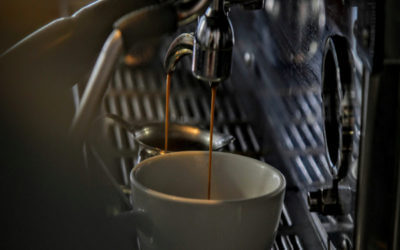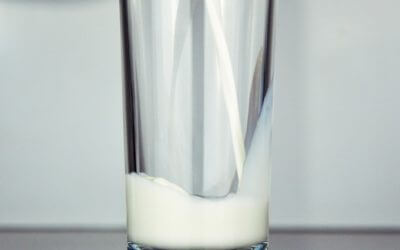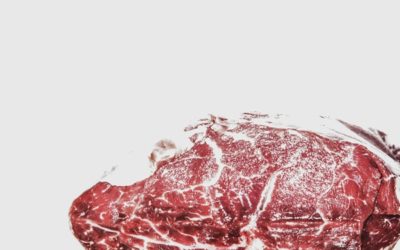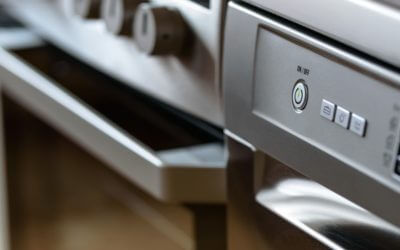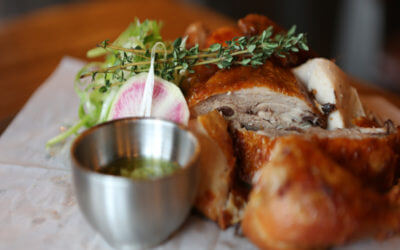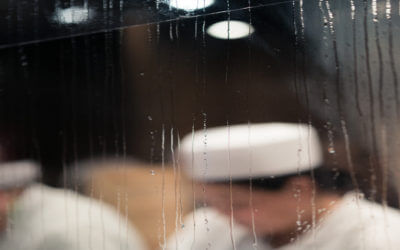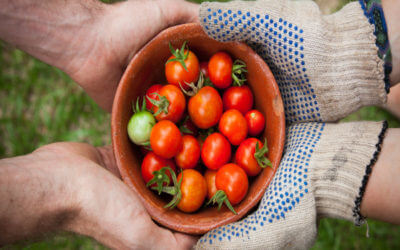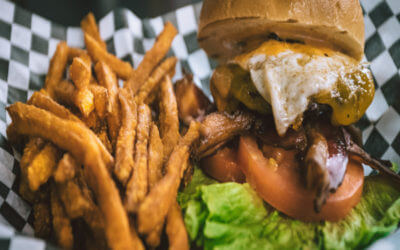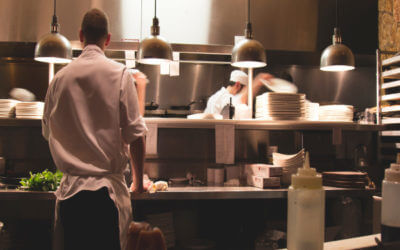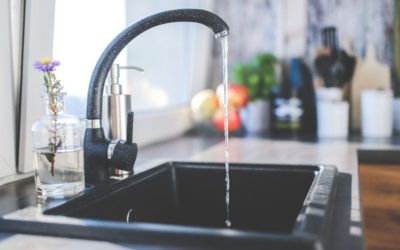Restaurant Supplies: Furnishing an Outdoor Sitting Area
August 14, 2018Outdoor dining is a very enjoyable experience for many people.
In Little Rock the weather is generally pleasant, although humidity may make it hard to eat outside on the hottest summer days.
Adding an outdoor sitting area to your restaurant can be a great way to expand your ability to serve customers without having to renovate or dramatically change your interior. Whether you choose a small outdoor area with a few tables or a larger outdoor plaza, all you really need are the right restaurant supplies.
As you choose your patio furniture, keep these considerations in mind!
Keep it Comfortable
The unfortunate reality of all dining room restaurant supplies, including outdoor seating, is that the most stylish option may not be the most comfortable. But comfort is vital when it comes to seating at your restaurant!
You want your guests to linger a bit. You want them to relax and enjoy the experience. If they do, they may order another bottle of wine. And then dessert. In the end, your tables are much more profitable if they are comfortable.
Keep outdoor furniture light in color and make sure they don’t hold water. You don’t want your guests to burn their legs in an Arkansas summer, and you should be prepared in case it rains.
Have Plans for Bad Weather
Little Rock gets a fair amount of rain, and sometimes the weather turns treacherous. Make sure you have a plan for how to handle your key restaurant supplies, including outdoor seating.
Having umbrellas over the tables can help shade hot sun and also protect your guests from small cloudbursts.
You also want a disaster preparedness plan that involves securing or bringing in your outdoor items if the weather is getting dangerous.
Secure Your Outdoor Restaurant Supplies
If you have a great space for outdoor service, there’s no reason not to make it striking and eye-catching. However, keep in mind that outdoor restaurant supplies are more prone to being stolen or damaged than indoor equipment.
Depending on the area you’re in, you’ll need to take precautions. Some restaurants choose to bolt the tables down and bring chairs inside after close. Or, you may find a way to use an attractive gate and fence to protect your dining area.
Many restaurants use steel cables and locks to secure patio furniture, which is less unsightly than chains. You can even just secure the furniture to other pieces, which makes thieves have to either cut the steel or take a bunch of pieces together.
Finally, security cameras are a great way to make sure that both thieves and your restaurant patrons and staff are behaving well outside your restaurant.
Get the Outdoor Patio Supplies You Need!
If you’re looking for new outdoor restaurant supplies, you probably need some help. It’s vital to choose pieces that are affordable, comfortable, and easy to find. You’ll likely need to replace pieces over time, so don’t buy a clearance set or a hard-to-find pattern!
We’d love to help you set up an outdoor space your customers will love. Contact us for quotes on the equipment you need today!
5 Things Every Restaurant Owner Should Do Before Buying Used Kitchen Equipment
Equipping your restaurant properly can cost a lot of money, so buying used kitchen equipment is the go-to choice for many restaurateurs. Buying used kitchen equipment for a restaurant is a bit different than buying used equipment for your home, however. You will...
Top Restaurant Technology Trends in 2018
When looking to buy restaurant supplies, you want to be on the leading edge of technology trends. This will keep your kitchen running smoothly. Let’s take a look at some of the most recent trends in restaurant supplies technology. 1. New Payment Options Who would...
5 Different Ice Shapes and Why You Should Care About Them
Ice makers are very popular in the restaurant and foodservice community because they eliminate the need to buy ice every day. And of course, adding an ice maker to your collection of foodservice equipment means you will always have ice on hand when you need it. An...
Pulping and Grinding: A Starter’s Guide to Reducing Commercial Food Waste Costs
For most restaurant owners and managers, the expenses involved in making meals are always under careful consideration. Water is needed to prepare, cook and wash food; power is necessary for food prep, cooking and cooling, and so on. However, how many of us consider...
Choosing the Right Milk Cooler: Cold Wall or Forced Air?
In a restaurant, milk is an essential to have on hand for coffee and other café-style beverages, for serving with kids’ meals, and as a key ingredient in many recipes. Keeping your milk properly chilled can be difficult without the proper restaurant equipment....
How to Choose Your Next Commercial Meat Smoker
The movies that connect with us on a personal level are the ones that linger in our memories forever. Anyone who has used a commercial meat smoker knows that they have a huge influence on the taste of a meal. You need to have just the right kitchen equipment to get a...
Are High Speed Ovens Too Good to be True?
You might have heard a few of the bold claims that foodservice equipment manufacturers have been making about high speed ovens, but they can’t be possible, right? Cooking three times as faster as regular ovens? Five times as fast? Fifteen times as fast? It may seem...
Choosing the Right Food Storage Containers for Your Restaurant
Choosing the right kitchen supplies will make a difference in your restaurant. Whether it is heavy duty kitchen equipment or food storage containers, each piece of equipment plays its own important role. Today, we are going to talk about how to choose the right food...
Tipton’s Guide to Perfect Poultry Trussing
Do you ever truss birds in your commercial kitchen? Trussing is a fantastic cooking technique because it makes poultry cook faster, look more attractive and taste better. If your commercial kitchen prepares poultry, you don’t want to miss these trussing tips. Trussing...
How to Eliminate Excess Condensation in Your Kitchen
Is your commercial kitchen getting steamy? If so, you could have more than just an uncomfortable working environment on your hands. Excess moisture in your commercial kitchen can result in the corrosion of equipment, the development of mold, and even damage to your...
The DIY Guide to Your Restaurant’s Own Garden
Stocking your restaurant supply with your own home-grown herbs and produce can truly bring your dishes to life. When it comes to food, everyone knows there’s nothing like homemade and home-grown. Having your own culinary garden, however large or small, can help you...
5 Reasons a Meat Grinder Will Set Your Burgers Apart
The more you do to prepare your foods in-house with the right kitchen equipment, the fresher and more flavorful your dishes become. There are all sorts of restaurants offering fast-food style burgers, but some diners are looking for the real deal. A fresh, juicy...
Pest Preventions to Implement in Your Commercial Kitchen
Restaurant pests: it’s something that few people want to think about. Like it or not, pest management is an essential consideration for every commercial kitchen. Offering food, shelter and water, the unprepared commercial kitchen naturally provides everything pests...
Choosing the Right Material for Your Cooking Equipment
Kitchens are very unique to their chef. Just like a car mechanic has a toolbox unique to them, so is the cooking equipment in a kitchen. And over time, the same cooking equipment become a natural extension of the chef. What tools are you using in your kitchen? It...
Kitchen Hacks for Your Home
Some people are naturally good at certain skills. We all know someone who is naturally book smart, athletic, or musically inclined. What makes you jealous of them is how easy they make tasks seem compared to you. One skill might be cooking. Your dream may not be...

